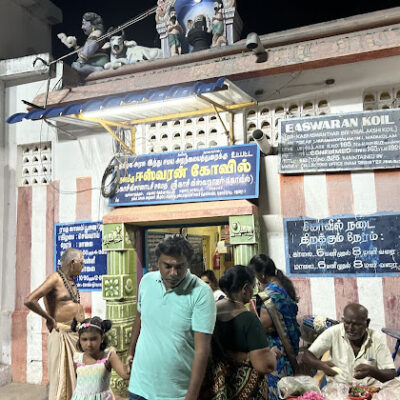Mogalarajapuram Rock cut Cave Temple- Andhra Pradesh

Address
Mogalarajapuram Rock cut Cave Temple Siddhartha College Rd, Moghalrajpuram, Christurajupuram, Vijayawada, Andhra Pradesh 520010
Diety
Shiva, Vishnu
Introduction
The Mogalrajapuram Caves are five rock-cut cave temple groups located in different parts of Vijayawada, Andhra Pradesh, India. Dedicated to Shiva, they were excavated during the Eastern Chalukya reign or the Vishnukundins reign. They are generally dated to about the 7th-century, after the Akkanna Madanna Caves. They are simple and small, yet the artwork and iconography is more sophisticated than Akkanna Madanna Caves. These include Nataraja, Ganesh and Ardhanarisvara. They are generally numbered as Cave I through V, with Mogalrajapuram Cave II being the most architecturally and iconographically evolved of the five. It is a centrally protected and managed by Archaeological Survey of India
Puranic Significance
The Mogalrajapuram Cave temples, particularly the more complex Cave II, has led to two theories of when these were excavated. Given the simplicity of Caves I, II–V and the iconography, some scholars place them in the 6th-century and credit the Vishnukundins dynasty. Other scholars consider Cave II, note the similarities with the simpler caves here, and place all of them in the second half of the 7th-century, crediting them to the Eastern Chalukya dynasty.
Cave I
The Cave I has a simple facade with two pillars and two pilasters. Between these, above each bay, the facade has a notch. The pillars are square, surmounted by an uttira with bhuta-gana decoration. The kapota exterior merges into the ceiling. The interior is more sophisticated, and of a square plan. It consists of three mandapas – mukha-mandapa (entrance hall), maha-mandapa (main gathering hall) and ardha-mandapa (devotional hall). Each mandapa has its own vajana frame, with ganas and hamsa malavahakas motifs. The single sanctum is on a faux-jagati carved from the rock. In front are profiles of two Shaiva dvarapalas, deliberately mutilated and gouged out. Their elegant kati-vastras can be traced, suggestive of the clothing popular around the 7th-century. Their profile is similar to those found in Pallava and Pandyan rock-cut monuments.
Cave II
The Cave II is in the south side of the Shivalayam hill in Vijayawada, and is the most evolved of five Mogalrajapuram caves. It has a more elaborate front court that was created by cutting out about 9 meters of rock. The facade consists of two pillars and two pilasters. Inside is a rectangular mandapa supported by four pillars and two pilasters. The mandapa leads to three sanctums.The front is flanked by two dvarapalas (damaged). They are in tribhanga-pose, both equipped with Shaiva motifs. Between them are two pillars, square at their ends and octagonal between. Three gavaskas decorate the top of the facade. The nasika kudus, vyalamukhas and sakti-dvaja artwork can readily traced. The entablatures here include playful elephants, lions, bulls and mythical fused animals. Inside the damaged stambha torana, at the top of the rock face is a Tandava Shiva (dancing Shiva). It is damaged, but three items can be identified – the damaru, the parasu and the trisula. A notable aspect of this dancing Shiva and Naga (snake) is that it reflects the Odisha-tradition; it was likely carved by a shilpin from Odisha. This iconic style of Nataraja becomes a standard relief on the sukanasi or the ceiling in the Eastern Chalukyan temples of later times.
Cave III and IV
Cave III and IV are small, one sanctum shrines. They are close to each other, on the southern side of the same rocky hill. Both have a facade with two pillars flanked by two pilasters, and a square sanctum. Cave III is larger of the two, with auxiliary shrines to the main rock-cut temple. Cave III is notable for the traces of Durga Mahisasuramardini bas-relief in the sanctum, though it is gouged out and damaged. Cave IV, in contrast, has a square pitha for a Shiva linga (lost), as well as with niches with padma-pitha of a four-armed Vishnu to the north and a four-armed Brahma to the south.
Cave V
Cave V is on the north side of the same hill that contains Cave III and IV. Cave V is unfinished, three shrines excavation. It is about 26.5 feet by 5.5 feet in size, with three square sanctums of 7.5 feet side each (they are almost a cube). The mandapa pillars are square in their cross section and plain. The pilasters have a series of animal friezes. Eight of these can be traced, the rest have been gouged out. The floor of this cave is restored with a thin layer of plaster poured in modern times.
Century/Period/Age
5th century A.D.
Managed By
Archaeological Survey of India (ASI)
Nearest Bus Station
Moghalrajpuram
Nearest Railway Station
Vijayawada Junction
Nearest Airport
Vijayawada









